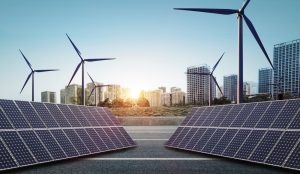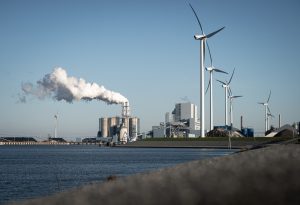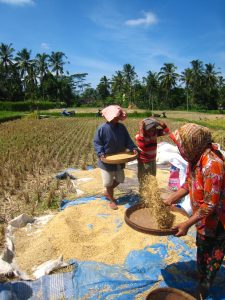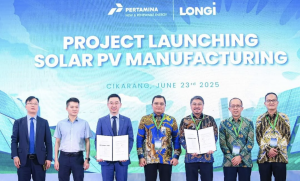Jakarta – Amid the expansion of BRICS influence and promises of a global energy transition, Indonesia risks falling deeper into fossil energy dependence, according to the latest Global Energy Monitor (GEM) report for April 2025. Despite being a new member of BRICS, the national energy development trajectory still strongly prefers coal and gas, with heavy support from Chinese state-owned companies.
This is revealed in the latest Global Energy Monitor report, which details that founding BRICS countries such as Brazil, India and China have become global leaders in clean energy development, while most of the new BRICS members – including Indonesia – are accelerating the construction of fossil fuel-based projects.
James Norman, Project Manager of the Global Integrated Power Tracker, and author of the GEM April 2025 report, noted that “new BRICS members are building over ten times as much coal, oil, and gas capacity (25 gigawatts (GW)) as wind and utility-scale solar (2.3 GW).”
China drives the majority of energy projects in the new BRICS member countries, including Indonesia. According to the same report, 62% of the power capacity under construction in the region involves Chinese state-owned companies, either as engineering and procurement contractors (EPCs) or as major financiers.
“Chinese state-owned enterprises (SOE) have widespread involvement in the financing and construction of BRICS power projects overseas,” Norman said in his report. Just under two-thirds of this total capacity under construction involves Chinese SOEs. “This share of Chinese involvement is even greater in hydropower and coal power projects, at 93% and 88%, respectively,” the report said.
In Indonesia, China’s support for coal projects reached 7.7 GW, despite Chinese President Xi Jinping stating that his country would stop funding coal overseas.
However, the irony comes when the data shows that China is the biggest backer of wind and solar projects in the same region, building more than half of the 947 MW of solar capacity and nearly 90 per cent of the 601 MW of wind capacity.
Clean ambition but fossil investment
The BRICS bloc now accounts for more than a third of global Gross Domestic Product (GDP) and around half the world’s population, while being a major contributor to global carbon emissions.
Brazil, as chair of BRICS 2025, has confirmed Indonesia as a full member, along with nine other partner countries: Belarus, Bolivia, Kazakhstan, Cuba, Malaysia, Thailand, Uganda, Uzbekistan and Nigeria.
However, while the old BRICS members have made great achievements in green energy development, most of the new members still rely on dirty energy. This creates a gap between the net-zero narrative and the reality of investment.
The GEM report also states that “all five of the new members that use coal for power have publicised some form of coal plant phaseout date. … But there is distance between intentions and actions within the power sector transition.”
Indonesia has designed various energy transition policies, including renewable energy development and emission reduction commitments. However, data from the Global Energy Monitor puts Indonesia in a contradictory position: it is actively building new coal plants while declaring clean energy ambitions.
This raises concerns that Indonesia could become a classic example of the fossil energy trap – a developing country driven to meet its energy needs through short-term, fossil-based solutions, at the risk of being trapped in outdated infrastructure and long-term emissions burdens.
Resilient BRICS members can show leadership and share their experience in the energy transition. But if the direction of development remains coal and gas, there is a great risk of these countries getting lost on the dirty energy path, the report said. (Hartatik)
Banner photo: Image generated by AI using OpenAI’s DALL·E via ChatGPT













